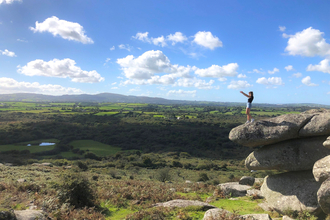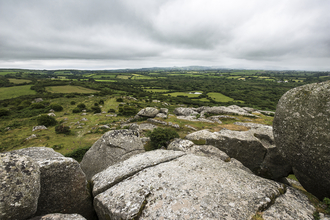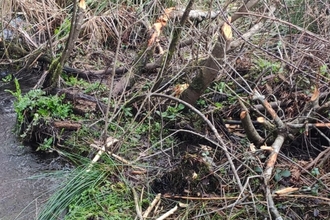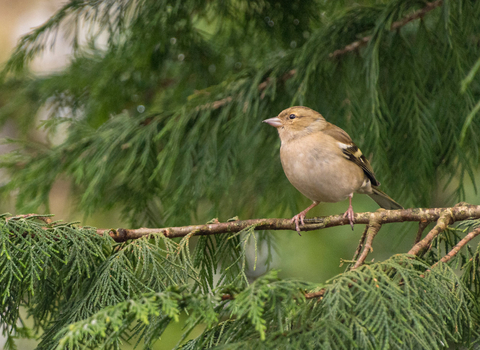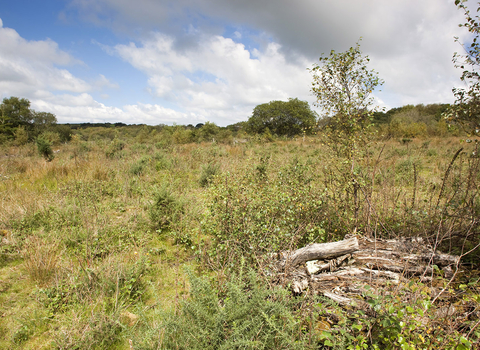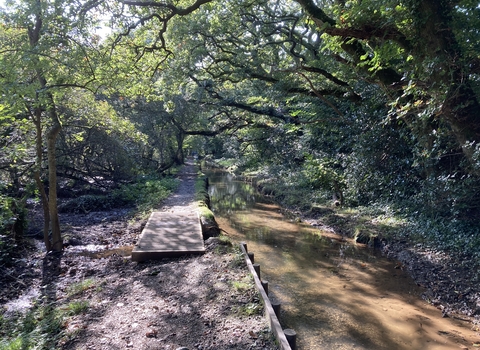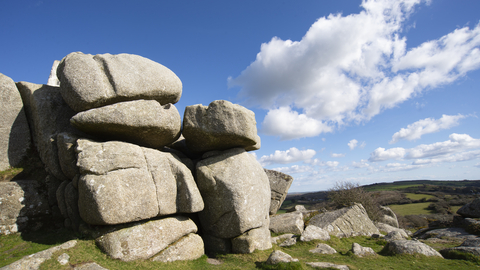
Adrian Langdon
Location
From the A30 / A391 roundabout (south of Bodmin) turn north to Lanivet and take the first right under the A30 bridge. Shortly after the bridge, take the first left up the hill. After ½ mile turn right at Reperry Cross and immediately take the fork left to Trebell Green. After a sharp right bend, take the left turn (between the granite posts). At the top of this road, on the left, is a rough car park.
View on What3Words
Know before you go
Dogs
When to visit
Opening times
All yearBest time to visit
April to July; November to FebruaryAbout the reserve
At over 700 acres, this is our largest reserve; a complex mosaic of habitats, including heathland, mire, scrubland, bog, ancient woodland, wet woodland, and acid grassland.
The tor itself boasts commanding views of the surrounding countryside – on a clear day, both north and south coasts are visible from its granite bouldered summit. The reserve has Scheduled Ancient Monument designation due to archaeological features, including a Neolithic tor enclosure and traces of a Bronze Age field system.
Explore our virtual map of the Helman Tor
Discover the Wilderness Trail
These rare heathland habitats, which have declined globally by 85% in the last 150 years, support a range of breeding birds, including cuckoo, yellowhammer, grasshopper warbler and stonechat.
Also found here is the adder, which, despite being the UK’s only venomous snake, rarely bites due to its secretive nature and highly effective camouflage that often enables it to roam its terrain unnoticed.
Extensive areas of wet woodland create an atmospheric environment, with mosses, lichens and ferns clinging to branches, and also provide suitable habitat for a multitude of bird species. These include one of the rarest birds in the UK, the willow tit, which has a black cap extending down its neck and a small black bib. It’s mid-brown behind its head and neck, with whiter cheeks and pale grey underparts.
Dormice are often found within the drier woodland between April and October, along with flora such as bluebells, yellow archangel, wood anemone and violets.
The reserve is a stronghold for the rare marsh fritillary butterfly. It was once widespread in Britain but its numbers declined sharply over the 20th century. Sites like Helman Tor are now vital for its future and member support helps to maintain habitats that aid its recovery. Most likely to be found in damp grassland, it has a wingspan of around 40mm, with its forewings and hindwings having small blocks of bright orange and pale yellow
bordered by dark brown veins.
Thanks to our supporters, the Rewilding Helman Tor Project is well underway, returning natural processes to the landscape so nature can look itself and create a wilder Cornwall.
Find out more about rewilding at Helman Tor
Our Helman Tor nature reserve is also a key part in Cornwall Wildlife Trust's ambitious new project, Tor to Shore - made possible with The National Lottery Heritage Fund.
Tor to Shore will create a Local Nature Recovery Network spanning across land and sea – one of the first of its kind in the UK - bringing together rewilding principles, sustainable farming practices, and marine conservation activities, all underpinned by communities.
From the granite boulders of Helman Tor, through farmland surrounding Par River, into the magnificent waters of St Austell Bay, this ambitious six-year Cornwall Wildlife Trust project will bring nature back.
Species
Contact us





